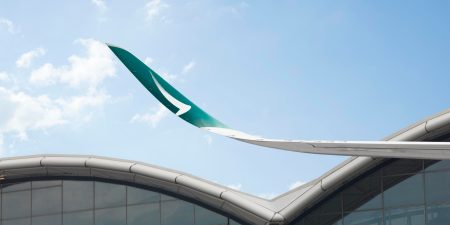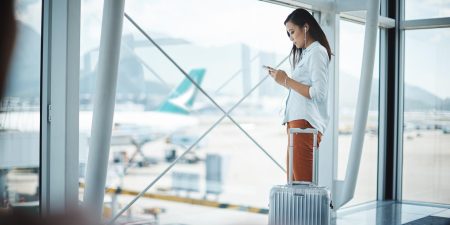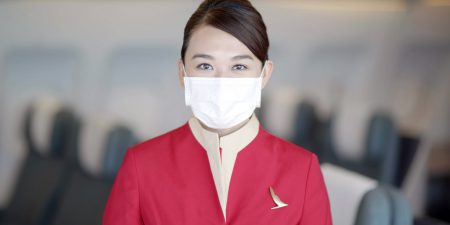Cathay Pacific announces 2014 annual results
| Results |
|
2014 |
2013 |
Change |
|
Turnover |
HK$ million |
105,991 |
100,484 |
+5.5% |
|
Profit attributable to the shareholders of Cathay Pacific |
HK$ million |
3,150 |
2,620 |
+20.2% |
|
Earnings per share |
HK cents |
80.1 |
66.6 |
+20.3% |
|
Dividend per share |
HK$ |
0.36 |
0.22 |
+63.6% |
The Cathay Pacific Group reported an attributable profit of HK$3,150 million for 2014. This compares to a profit of HK$2,620 million in 2013. Earnings per share were HK80.1 cents compared to HK66.6 cents in 2013. Turnover for the year increased by 5.5% to HK$105,991 million.
In the first half of 2014 the Group’s business was affected by high fuel prices, reduced passenger yield and continued weakness and over-capacity in the air cargo market. Business was better in the second half of the year. For the full year, passenger demand was reasonably firm, with high demand during the peak summer and Christmas periods. After a prolonged period of weakness, cargo demand started to improve in the summer of 2014 and was strong in the fourth quarter, which is the peak period for cargo. The Group’s business benefited from lower fuel prices in the fourth quarter, but this was partially offset by fuel hedging losses.
Passenger revenue for Cathay Pacific and Dragonair in 2014 increased by 5.4% to HK$75,734 million compared to the previous year. Capacity increased by 5.9% as a result of the introduction of new routes (to Doha, Manchester and Newark) and increased frequencies on some existing routes. The load factor increased by 1.1 percentage points to 83.3% and the number of passengers carried increased by 5.5% to 31.6 million. Yield decreased by 1.8% to HK67.3 cents despite an improvement in the second half compared to the first half of the year. Passenger demand was strong in all classes of travel on long-haul routes. However, the increase in passenger numbers did not match the increase in capacity on North American routes. Strong competition put downward pressure on yield on regional routes.
After a prolonged period of weakness, cargo demand started to improve in the summer of 2014 and was very strong in the fourth quarter. The Group’s cargo revenue in 2014 increased by 7.3% to HK$25,400 million compared to the previous year. Over-capacity in the air cargo market put downward pressure on rates in the first half of the year. Yield for the full year for Cathay Pacific and Dragonair decreased by 5.6% to HK$2.19, despite improved cargo demand in the second half. Capacity increased by 10.4%. The load factor increased by 2.5 percentage points to 64.3%. Capacity was managed in line with demand in the first half of 2014 but an almost full freighter schedule was operated for most of the second half. The new Cathay Pacific cargo terminal worked effectively in its first full year of operation and made the Group’s cargo operations more efficient.
Fuel is the Group’s most significant cost and its fuel costs in 2014 (disregarding the effect of fuel hedging) increased by 0.7% compared to 2013, significantly below the increase in passenger and cargo capacity of 5.9% and 10.4% respectively. Fuel consumption increased because more flights were operated, but the introduction of more fuel efficient aircraft and the retirement of less fuel efficient aircraft moderated the increase. The Group also benefited from lower fuel costs in the fourth quarter. Fuel accounted for 39.2% of total operating costs, compared to 39.0% in 2013. Managing the risk associated with high and volatile fuel prices is a priority and fuel hedging contracts extend to 2018. The sharp reduction in fuel prices in the fourth quarter of 2014 caused a very welcome net benefit to overall profits. However, it resulted in losses on our hedging contracts. It also resulted in significant unrealised hedging losses. These unrealised losses are reflected in the consolidated statement of financial position at 31st December 2014 and caused a reduction in our consolidated net assets.
The Group continues to invest heavily in its fleet, taking delivery of 16 new aircraft in 2014: nine Boeing 777-300ER aircraft, five Airbus A330-300 aircraft and (for Dragonair) two Airbus A321-200 aircraft. Six Boeing 747-400 passenger aircraft were retired during the period. In 2013, it agreed to sell its six Boeing 747-400F freighters back to The Boeing Company. One of them was delivered in November 2014. Two of the remaining freighters are parked and all five of them will have left the fleet by the end of 2016. At 31st December 2014 the Group had 79 new aircraft on order for delivery up to 2024. A total of nine new aircraft are scheduled for delivery in 2015.
The Group also continues to develop its passenger and cargo networks. In 2014, Cathay Pacific introduced passenger services to Doha, Manchester and Newark, and will introduce passenger services to Zurich, Boston and Dusseldorf in March, May and September 2015, respectively. The Los Angeles service was increased to four-times-daily from June 2014. The San Francisco service will be increased to 17-times-weekly in June 2015. Dragonair started flying to Denpasar-Bali and Penang (replacing Cathay Pacific on the latter route), increased frequencies on a number of other routes and will introduce a daily service to Haneda in Tokyo in March 2015. Cathay Pacific introduced cargo services to Columbus, Calgary and Phnom Penh in 2014, and added Kolkata to its freighter network in March 2015.
Cathay Pacific has completed the installation of new or refreshed seats in all its aircraft which started in 2011. At 31st December 2014, new business and economy class seats had been installed in all Dragonair Airbus A330-300 and six A321-200 aircraft, and new first class seats had been installed in six Dragonair Airbus A330-300 aircraft. In November 2014 the installation of new business and economy class seats began in Dragonair’s Airbus A320-200 aircraft and is expected to be completed in 2018. In October 2014 a refreshed logo was introduced for Cathay Pacific. This is part of a new approach to design, to be seen on the airline’s website, in the new lounge at Haneda in Tokyo, and in the refurbished first class lounge in The Pier at Hong Kong International Airport, which will open in June 2015.
The contribution from Air China (the results of which are included in the Group’s results three months in arrear) was below expectations in 2014. Air China’s results were adversely affected by a difficult operating environment and substantial exchange losses caused by the depreciation of the Renminbi in the early part of the year. As the year progressed, Air China’s results improved as a result of lower fuel prices. In 2014 the Group and Air China made a substantial injection of capital and loans into Air China Cargo. This capital injection provided funds to enable the carrier to buy new aircraft and improve the performance of its cargo business.
Cathay Pacific Chairman John Slosar said: “It was encouraging to see an overall improvement in our business in 2014. That improvement has continued in the first quarter of this year and we are positive about the overall prospects for 2015. Demand in our cargo business continues to improve and is currently being helped by the congestion in sea ports on the West Coast of the United States. We continue to benefit from the lower net fuel prices. Our associates are also benefiting from these positive factors. While we face growing competition in our passenger business, which makes it harder to maintain yield, overall demand remains strong and the outlook is positive.
In 2014 we continued our efforts to make Cathay Pacific and Dragonair better airlines for our customers. The fact that we won the World’s Best Airline award for the fourth time is clear recognition from air travellers worldwide of the work we have put into providing superior products and services. The Group’s financial position remains strong, which will enable us to continue with our long-term strategic investment in the business and our commitment to reinforcing Hong Kong’s position as one of the world’s premier aviation hubs.”










